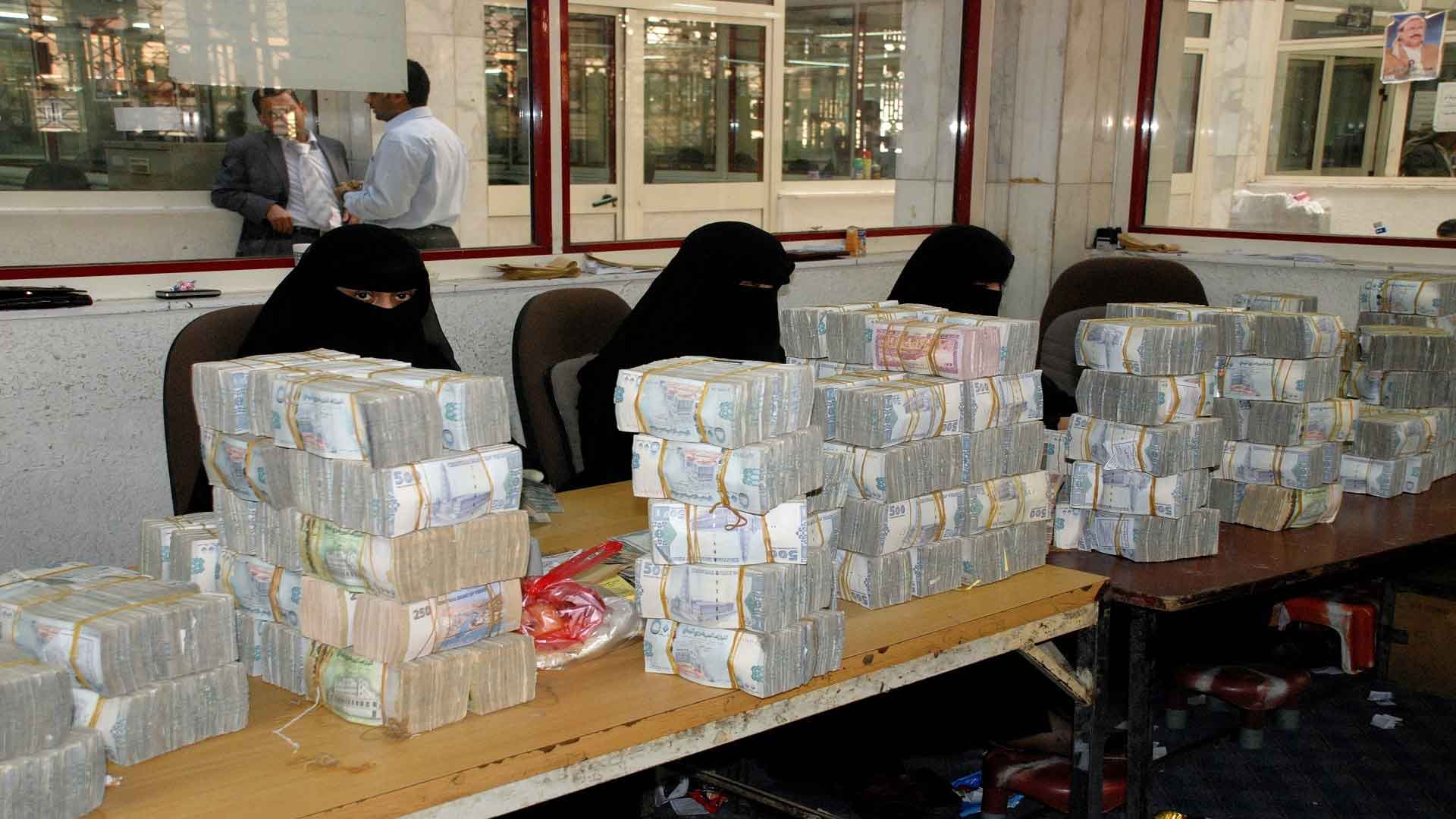


Barran Press
The Yemeni Rial has plummeted to an unprecedented low against foreign currencies, despite recent interventions by the Central Bank and a new Saudi aid package.
Banking sources in Aden, the temporary capital, reported on Monday, July 8, 2024, that the dollar reached 1870 for purchase, up from 1670 at the beginning of the year. The selling rate reached 1887. The Saudi Riyal also saw a significant increase, reaching 490 for purchase and 493 for sale, compared to 440 at the start of the year.
This decline comes despite ongoing Saudi support, with three installments of a Saudi deposit reaching the Central Bank in Aden to address the government's budget deficit. The Central Bank has also implemented measures aimed at protecting the banking system, curbing currency speculation, and mitigating the impact on the national economy.
20 Factors Contributing to the Collapse
Economist and analyst Haitham Al-Foudhi identified 20 factors contributing to the rapid depreciation of the Yemeni Rial in a Facebook post.
Key factors include:
Al-Foudhi concludes that these factors collectively create a complex economic dilemma that contributes to the rapid decline of the Yemeni Rial and makes achieving economic stability in the country extremely challenging.
The Central Bank continues to implement measures to counter the economic actions taken by the Houthi group, which have impacted the banking sector and contributed to Rial's decline in government-controlled areas.
By the decisive move to combat financial irregularities, the Central Bank of Yemen (CBY) has revoked the licenses of 15 exchange companies and ordered the closure of their branches indefinitely. This action, announced last week by Governor Ahmed Al-Maaqi, comes as a response to the companies' violation of bank regulations and directives.
This latest measure follows a series of stringent decisions by the CBY aimed at stabilizing the Yemeni economy, which has been severely impacted by the ongoing conflict. In previous months, the bank implemented a unified network for internal remittances, banned dealings with 12 unlicensed electronic payment entities, and permanently halted operations of local money transfer networks owned by banks or exchange companies.
The CBY's efforts to control the financial landscape are further highlighted by its May 30th decision to cease dealings with six Yemeni banks and banking institutions. This decision was issued after the banks failed to comply with the 60-day deadline to relocate their main centers to Aden, the country's temporary capital.
The CBY has also taken steps to address the circulation of old Yemeni currency. In a recent directive, all individuals, businesses, and financial institutions were instructed to deposit any pre-2016 paper money within a 60-day period.
The Yemeni economy faces significant challenges, exacerbated by the monetary division imposed by the Houthi group, which is designated as a terrorist organization by the international community. The Houthi's bombing of oil export ports last October further intensified the economic crisis by hindering the internationally recognized government's ability to generate revenue.
In an effort to alleviate the economic strain, Saudi Arabia pledged $1.2 billion in economic support to the Republic of Yemen in August 2023. This aid is intended to address the Yemeni government's budget deficit, which has been exacerbated by the Houthi attacks on oil export facilities in Hadhramaut and Shabwa governorates.
The first installment of the Saudi economic support, amounting to $250 million, arrived in Yemen on August 3rd. A second installment of $250 million was transferred on January 16th, followed by a third installment announced on June 14th, all aimed at bolstering the Yemeni government's budget.
The CBY's decisive actions, coupled with the Saudi economic support, represent a concerted effort to stabilize the Yemeni economy amidst the ongoing conflict and its devastating consequences. However, the challenges facing Yemen remain significant, and the success of these measures will depend on a comprehensive approach to address the root causes of the economic crisis.